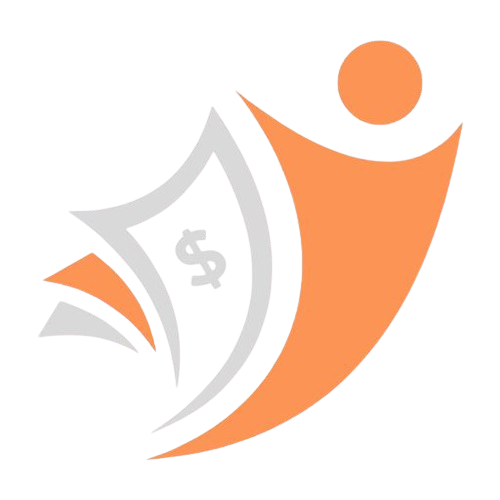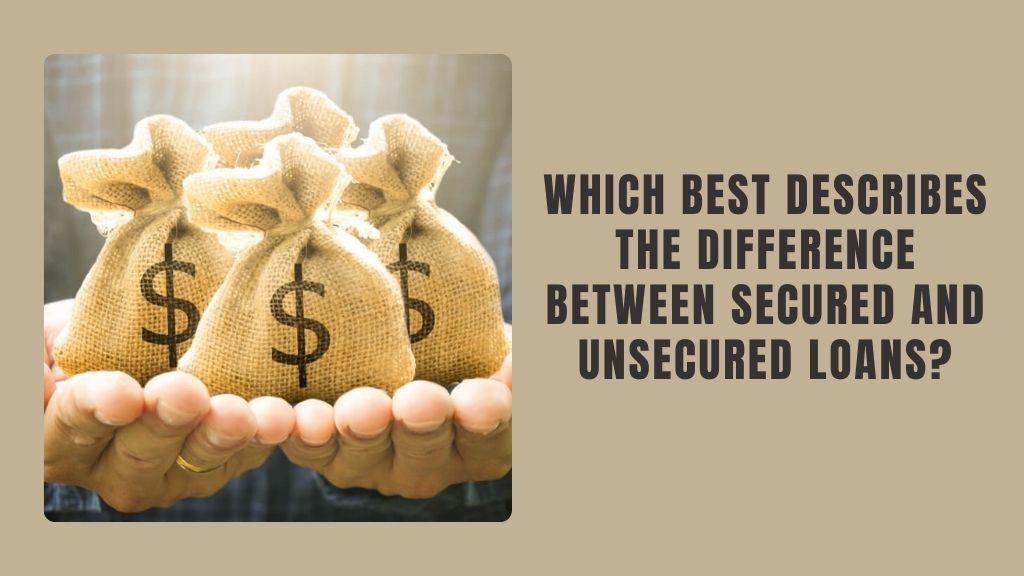Many people borrow money at some point in their lives, whether to buy a house, pay for education, or cover emergency expenses. But before applying for a loan, it is important to understand the kind of loan you are choosing. One common question people ask is, “Which best describes the difference between secured and unsecured loans?” This question is very important because your decision can affect your finances, interest rates, and even your personal property.
In this blog, we will explain in simple and clear terms the key differences between secured and unsecured loans. We will also explore examples, pros and cons, and when to choose each type of loan.
What Is a Loan?
A loan is a sum of money that a person borrows from a bank, credit union, or other lender with the agreement to repay it over time, usually with interest. Loans are used for many purposes like buying a car, starting a business, or paying for college. There are different types of loans, but most loans fall into two main categories: secured loans and unsecured loans.
Also read: How Does Paying Off the Balance Monthly Help a Credit Card User Avoid Finance Charges?
What Are Secured Loans?
A secured loan is a loan that is backed by something valuable you own. This valuable thing is called “collateral.” Collateral is something the lender can take from you if you do not repay the loan. Common types of secured loans include:
- Home loans (mortgages) – where your house is the collateral.
- Car loans – where your car is the collateral.
- Secured personal loans – where other assets like savings, investments, or valuable items are used as collateral.
Because the lender has a way to recover their money, secured loans usually come with lower interest rates and are easier to get if your credit score is not very high.
What Are Unsecured Loans?
An unsecured loan is a loan that is not backed by any collateral. Instead, the lender gives you the money based on your credit score, income, and repayment history. Examples of unsecured loans include:
- Personal loans
- Credit card debt
- Student loans
Because there is no collateral involved, lenders take more risk when giving unsecured loans. That is why unsecured loans usually have higher interest rates, and the approval process can be more strict, especially if your credit history is weak.
Which Best Describes the Difference Between Secured and Unsecured Loans?
The best way to describe the difference is:
A secured loan requires collateral, while an unsecured loan does not.
This single line clearly explains the main point. With secured loans, your property is at risk if you do not repay. With unsecured loans, there is no property at risk, but you may face other consequences like damage to your credit score or legal action.
Key Differences Between Secured and Unsecured Loans
Here is a detailed comparison to help you understand the differences better:
| Feature | Secured Loan | Unsecured Loan |
| Collateral Required | Yes | No |
| Risk for Borrower | You can lose the asset if you default | No asset risk, but credit score may suffer |
| Interest Rate | Lower | Higher |
| Loan Amount | Usually higher | Usually lower |
| Approval Chances | Easier with bad credit | Harder with bad credit |
| Examples | Mortgage, car loan | Personal loan, credit card |
Advantages of Secured Loans
Secured loans offer many benefits:
- Lower Interest Rates – Since the lender has less risk, you usually get better interest rates.
- Larger Loan Amounts – You may be able to borrow more money.
- Longer Repayment Terms – This makes your monthly payments more manageable.
- Better for Poor Credit – If you have a low credit score, offering collateral can help you get a loan.
Disadvantages of Secured Loans
Even though secured loans have advantages, they also have some downsides:
- Risk of Losing Property – If you can’t pay back the loan, the lender can take your car, home, or other property.
- Longer Processing Time – Secured loans may take longer to approve because the value of your collateral needs to be checked.
- Asset Value Limits – You can’t borrow more than the value of your asset.
Advantages of Unsecured Loans
Unsecured loans are popular for a reason. They offer:
- No Risk to Your Property – You don’t have to offer collateral.
- Quick Approval – Many personal loans or credit cards are approved quickly.
- Great for Small Needs – If you only need a small amount of money, unsecured loans work well.
Disadvantages of Unsecured Loans
Here are some drawbacks:
- Higher Interest Rates – Since the lender takes more risk, you pay more interest.
- Harder to Qualify – If you have a poor credit score, it may be difficult to get an unsecured loan.
- Lower Loan Amounts – You may not be able to borrow as much as you would with a secured loan.
When Should You Choose a Secured Loan?
You may consider a secured loan if:
- You are buying a car or house.
- You want a lower interest rate.
- You have a valuable asset to use as collateral.
- You have a low credit score and need better loan approval chances.
Example: If you want to buy a house, a mortgage is a secured loan. If you stop paying, the lender can take the house. But because the lender has security, you usually get a better interest rate.
When Should You Choose an Unsecured Loan?
An unsecured loan may be the better choice if:
- You need money quickly.
- You do not want to risk losing property.
- You have good credit.
- You are borrowing a small amount.
Example: If you want to pay for a short vacation or unexpected repair, a personal loan or credit card (unsecured loans) can help you without risking your assets.
How Do Lenders Decide Which Loan You Qualify For?
Lenders look at several factors:
- Credit score
- Income level
- Employment history
- Debt-to-income ratio
- Loan purpose
If your credit is low, lenders may ask for collateral. If you have high income and a good credit score, you may qualify for unsecured loans with better terms.
How to Avoid Risk When Taking a Loan
Whether you choose a secured or unsecured loan, you must be careful:
- Borrow Only What You Can Repay – Do not take more than you need.
- Read the Loan Terms – Understand interest rates, repayment period, and penalties.
- Make Timely Payments – This keeps your credit score healthy.
- Compare Offers – Always check different lenders for better terms.
Tips to Maintain Good Loan Habits
- Set a monthly budget.
- Use auto-pay to avoid late payments.
- Check your credit score regularly.
- Avoid taking multiple loans at the same time.
Future Implications of Loan Choices
Your choice between a secured and unsecured loan can impact your future:
- Credit History – Good repayment boosts your credit score.
- Financial Freedom – Timely repayments help you stay out of debt.
- Property Ownership – In secured loans, failure to pay can lead to losing your assets.
Always think about how a loan will affect your financial goals in the long run.
Also read: 10 Characteristics of Management Information System
Conclusion
To sum up, the key question, “Which best describes the difference between secured and unsecured loans?” can be answered simply: Secured loans are backed by collateral, and unsecured loans are not. This difference affects your interest rate, risk, and loan terms.
Choosing the right type of loan depends on your needs, credit history, and what you are willing to risk. Both types of loans have advantages and disadvantages, and understanding them clearly can help you make better financial decisions. Always think carefully before borrowing, compare your options, and choose the one that supports your financial future.

